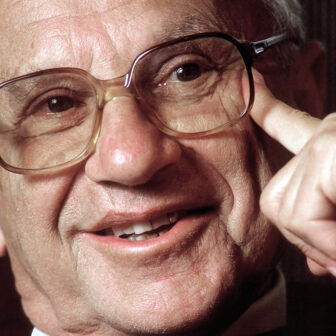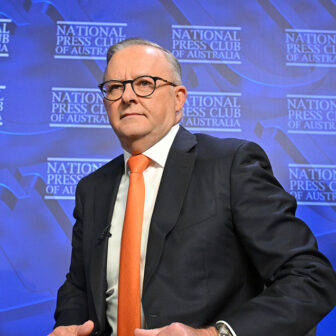“How did we get ourselves into this situation?”
– Josh Frydenberg, Minister for the Environment and Energy, in the Australian Financial Review, Friday 10 March 2017
Australia used to pride itself on its cheap gas and electricity. Inexpensive, plentiful energy was seen as a vital source of comparative advantage for our producers, and above all for energy-intensive manufacturers. Australia has vast energy resources, and firms invested here on the assumption that the advantage would be permanent.
That advantage has gone now, destroyed by naive policy idealists with good intentions who didn’t see the implications of the changes they were making. The consequences for industries lured here by cheap energy are disastrous. Companies that make things, in a range of industries, are experiencing outlandish price increases that will make it impossible for some of them to stay in business.
Wednesday’s handshake agreement between prime minister Malcolm Turnbull and two gas companies to ensure that gas will be available to domestic users, including gas-fired power stations, didn’t deal with the issue of price. It couldn’t, because policy-makers are wedged in by the implications of earlier decisions they can’t change.
Most of those choices were made long ago, at both levels of government and on both sides of politics. The Gladstone liquid natural gas, or LNG, plants that have wrecked the domestic gas market were approved under the governments of Kevin Rudd and Anna Bligh. Recent decisions by state governments, especially in Victoria, have poured more fuel on the fire, but their worst impact is still ahead of us.
In the seventeen years since the turn of the century, consumer prices have risen 59 per cent across the board. But gas prices have shot up 175 per cent – three times the overall inflation rate – and electricity prices have soared 187 per cent. The privatisation and deregulation of gas and electricity has failed consumers.
But the failure for business is far worse. A chilling Australian Industry Group report shows that over just three years the gas prices asked of manufacturers have soared from $4 per gigajoule to, at best, $10, and in some cases up to $20. Australians now pay “the highest gas prices in the developed world,” says the group’s chief executive, Innes Willox. “Even Japanese customers are able to buy gas on spot markets for well below the prices being offered to Australian customers today.”
In Australian dollars, says Willox, spot prices in the market are $4 in the United States, $8.40 in Europe, and $11 in Japan. But in eastern Australia, “that gas is being offered for new contracts at $16–22/GJ in the short term, and $12.50+ for three years. Prices seem to be headed up from here. This is economically unsustainable and will drive investment and jobs offshore. Immediate action is needed.”
But don’t just listen to the industry group. ACCC chairman Rod Sims isn’t known for any special empathy for manufacturers, nor for emotive, imprecise language. This week, though, he warned that the gas market is now in a crisis that could lead to plants closing and jobs being lost. “Australia often makes it hard to be involved in manufacturing,” Sims said. “We are now making it extremely difficult if not impossible for some… Many large gas users are going to find it extremely difficult to sustain their business.”
This is policy failure on a grand scale. It will probably have disastrous consequences for some firms and for many workers. The prime minister’s agreement this week is no solution. Not all the gas producers signed up, and there was no suggestion that any of them would reduce the prices that have skyrocketed since Australia began exporting LNG from Gladstone.
I see no sign that the federal government recognises just how serious the situation is for manufacturers. Some of them are the only local suppliers of basic materials relied on by downstream producers. The implications for Australia if they close could be serious. It is within the powers of government to make the changes that would keep this kind of production viable in Australia. But the Turnbull government is playing to the gallery, and in Victoria the Andrews government is playing to green voters. Both are neglecting their responsibilities.
The gas crisis has spilled over into, and widened, the electricity crisis. We used to assume that gas would be the transition fuel that would lower emissions from power generation and form a bridge between the age of coal and the age of renewables. Not at these prices, it won’t. The last gas-fired power station opened in 2014. None are being built now, and no one has committed to building another one.
How did we get ourselves into this situation? It’s a complex story involving so many governments, regulators and companies that everyone can always find someone else to blame. Let’s go back to where it began.
In the 1960s, Esso and BHP discovered abundant natural gas in Bass Strait. Victorian premier Henry Bolte insisted that all their gas would be sold to the state-owned Gas and Fuel Corporation, at well below world prices, to benefit manufacturers, households and, later, electricity users. That agreement saw Victoria expand jobs and output in petrochemicals, food processing and many other industries; it also cut the cost of living for Victorians, who relied on gas for cooking, water heating and heating the home.
That approach to energy policy was widely shared by Australian governments, not least the long-running Playford government in South Australia. Their policy fundamentals were threefold. Prices should be set below world parity to give a comparative advantage to Australian users, not to swell the profits of energy companies. Government should play the central role as energy purchasers, producers, distributors and retailers. And gas exports would be allowed only when the economics of the project depended on them, as in the massive North West Shelf gasfield, but Australians should retain a first claim on any gas produced.
That was a protectionist policy. Like many (though not all) protectionist policies, it mostly worked well. State electricity authorities sometimes allowed their forecasts of future demand to be set by wishful thinking; power stations were overstaffed and strangely prone to breakdowns. But gas and electricity were cheap, and reliable. The market was often oversupplied with electricity, but in the cities it hardly ever ran short – unless some union was on strike.
When the free marketeers won control of the policy levers, they sold off state energy companies, and allowed prices to be set by the market, at world parity levels. Not because the public was demanding that; quite the opposite. Australian voters, then and now, wanted their power and gas supplies to be under public ownership.
The electricity and gas sectors are now mostly privatised, and are dominated by monopolies and oligopolies which – even while formally regulated, or competing in open markets – have the means to effectively set their own domestic prices. And we consumers and downstream businesses are paying dearly for it.
The new policy rules put their faith in regulation. But when gas and electricity prices have almost trebled in just seventeen years, it is clear that regulation has failed to protect the public.
The regulators have been easy meat for the sharp legal and accounting brains working for the energy companies. These guys know how to make the rules work in their favour, and have become adept and ruthless at doing so. If the role of business is simply to maximise profits, it shouldn’t surprise us if that’s what they’re doing. In a dog-eat-dog world, the dogs with sharp lawyers will find a way to eat the dog who’s doing an honest day’s work.
We need gas and electricity prices to come down. And we need gas supplies to be guaranteed by law, rather than by a handshake.
Labor accepts that. While it made the original mistake of waving the Gladstone LNG plants through without safeguards for domestic users, it has since recognised that mistake, and pledged to reserve part of Australia’s massive gas production for domestic business and households. The Barnett government in WA had already done that, reserving 15 per cent of new gas production for the domestic market.
By rejecting any quantity controls and failing to tackle the price issues, Turnbull also runs the serious risk of failing to resolve the crisis. If so, the damage could be heavy.
How did Queensland’s LNG plants wreck the domestic gas market? Essentially, they overreached. They built capacity for gas they didn’t have, and committed to contracts to supply it.
They ignored the opposition from farmers and the public to fracking, their often destructive way of unearthing coal seam gas. They assumed that fracking would be given carte blanche to expand, which meant Australia would have lots of gas to export (and Gladstone could be the hub to export it from). That was a serious error of judgement.
They made contracts to supply Asian energy companies with more LNG than they could produce themselves. When governments in New South Wales, Victoria, Tasmania and the Northern Territory in turn imposed moratoriums on fracking, the LNG producers were caught short. At the same time, a steep fall in oil prices made them write down their assets and cut back gas exploration.
To fulfil their contracts, they (and particularly Gladstone LNG) began raiding domestic supplies – buying up gas on the domestic market, piping it to Gladstone, and shipping it out to places like Japan and Korea. Even AGL sold some of its gas output to the LNG producers – leaving itself caught short as the market grew ever tighter and prices soared.
But the LNG plants are not only buying up domestic gas to fulfil their contracts. They are also buying it to sell into spot markets overseas, which they have no obligation to supply. If the Turnbull government is to get serious about trying to keep energy-intensive manufacturing in Australia, its first step should be to use its export powers to ban sales to overseas spot markets until the domestic crisis is sorted out.
The bans on gas exploration by state governments – in Victoria’s case, even a ban on exploration for conventional gas production – are another policy misjudgement with serious consequences, particularly in the future. Rod Sims put it well in his speech on Tuesday:
Undoubtedly there are important environmental and social consequences underpinning [Victoria’s] policy decision. The ban comes, however, at a time when there is a critical need for more gas supply in the east coast, particularly in the south. Without this supply it is clear that gas prices must increase, which will damage [business] users and increase household energy bills…
We feel that policy-makers need to consider the costs or benefits of projects on a case-by-case basis. It is easy to accept that some projects will fail on environmental grounds; it is, however, difficult to accept that they all do.
Victoria is the epicentre of the industries most affected. It is astonishing that in the middle of a life-and-death crisis for some of them, the state’s Labor government could ban conventional gas exploration. You could not remotely imagine John Cain, Steve Bracks or John Brumby legislating to outlaw gas exploration at a time when Victorian industry is being strangled by high gas prices.
This is a very different Labor government from its predecessors. The gas ban is another example of what Sunday Age columnist Farrah Tomazin has termed Daniel Andrews’s “remarkable capacity to commit political self-harm.” It is starting to look like a one-term government.
Then there is the contribution the gas shortage has made to South Australia’s series of power shortfalls. The Australian Energy Market Operator and power companies have told the Senate inquiry into the resilience of electricity infrastructure that at least one of the blackouts in South Australia could have been averted if power station operators had had access to adequate gas supplies. With all its coal-fired plants now closed – by private owners, not by the Weatherill government – the state relies heavily on two gas-fired plants in Adelaide: Torrens Island, a fifty-year-old plant which AGL executives described as ready for the retirement home, and Pelican Point, a much newer, cleaner plant, which is struggling to find enough fuel.
It is tragic for good energy policy that the Turnbull government keeps trying to bash up South Australia’s Labor government, blaming its 50 per cent renewable energy target for every tornado, Victorian transmission failure or gas generator failure that causes a temporary blackout in the state. These claims are untrue, and they get us nowhere.
The power operators, regulators and experts giving evidence to the Senate committee were unanimous on two things. First, South Australia’s wind power stations were built because of the federal government’s renewable energy target – not because of any state policies or incentives. Power companies that had to comply with the RET located an outsize share of wind generators in South Australia because it has a lot of wind, and not much else.
Second, wind power stations played a role in only one of the recent blackouts, in September when the tornadoes brought down transmission towers, and the network’s settings were then unable to cope with the non-synchronous power of the wind plants. The draft Finkel report on energy security noted that this problem was identified and fixed years ago in Europe, the United States and China, where most of the world’s wind energy is located. Lest we forget, the rest of the world generates one hundred times as much wind power as Australia. Wind does work.
That said, let’s be realistic. Power outages are annoying, but they are rarely life and death matters. South Australia and Queensland get more than their share of them, because they are at either end of the grid, which makes sudden power shortfalls harder to cover. That happens if you are at the end of the line. The remote eastern Victorian town of Mallacoota has so many power outages that it now has an established formula to calculate the rebate paid to consumers each year as compensation. That’s a practical way of dealing with the problems.
What is not practical is what the Weatherill and Turnbull governments are offering us now: noble projects pledging energy security, which will cost a lot, but deliver very little.
Jay Weatherill plans to spend $360 million of taxpayers’ money to get someone to build a 250 MW gas-fired plant somewhere, which will be switched on only when South Australia has a power crisis. Yes, the closure of Hazelwood makes it critical that South Australia boosts its own energy sources, but this would be an insurance policy whose cost is out of all proportion to the benefit it provides. South Australia needs a new gas station, to replace the elderly Torrens Island, but that would be a 500 or 1000 MW station to be operated 24/7, not just a backup for the odd emergency.
Now Malcolm Turnbull tells us he wants to spend “billions of dollars” of our money to build new pump storage tunnels with a 2000 MW capacity within the existing Snowy Mountains scheme. That sounds like a big expansion of our generation system, but it’s not. Pump storage is a way of meeting peak load or sudden demands on the power system; it’s not a 24/7 operation either. When power is plentiful, operators pump water uphill, from a lower storage to a higher one, so it’s there when you need it. When the critical moment comes, the water is released, rushes down, sends the hydro turbines spinning, and bingo! you’ve suddenly got electricity to spare.
But the system is expensive to build, which is why Victorian premier Dick Hamer finally rejected it in the 1970s after a brief infatuation like Turnbull’s. Power has to be taken out of the system to pump the water up. It’s not the only way to cope with a crisis, and pretty well every other solution will be cheaper.
I would plead one thing with the prime minister: promise us that this project will be built only if it passes an independent cost–benefit analysis by Infrastructure Australia. It too would be a very expensive insurance policy, and it would be years before it could be fully operational. The appeal to the romance of the Snowy project of old, the fact that this plan has come out of the blue, and from politicians rather than power experts… frankly, it smells like a political stunt.
The electricity industry is waiting for the government to produce an energy policy that explains how it will meet its commitment to drive down greenhouse gas emissions by 2030 to 26 to 28 per cent below 2005 levels. The government says it is waiting on the final report of the Finkel review before announcing its policy.
There is an overwhelming consensus that the centrepiece should be an emissions intensity scheme, as proposed by the draft Finkel report, by the government’s handpicked Climate Change Authority, and by electricity generators and big users alike. This would give the energy industry a clear, bipartisan timetable to reduce emissions, enabling it to plan and invest with confidence.
Turnbull’s Snowy Mountains announcement and his bullying of South Australia are alarming signs that the government may ignore the industry and continue to treat energy policy as a field of partisan conflict and stop-start policy. If it is going to change tack, it had better start soon. •




